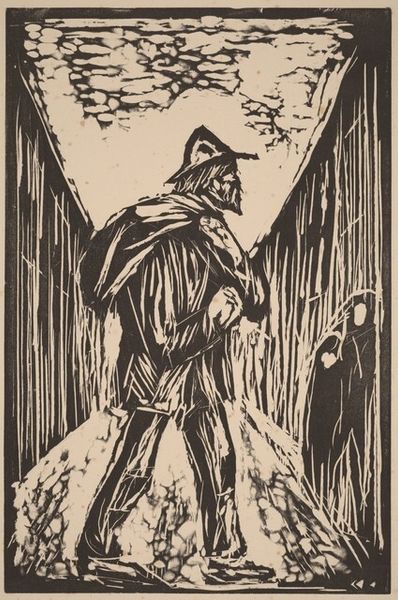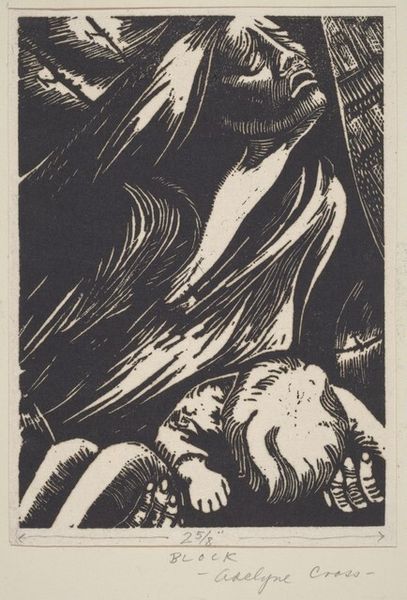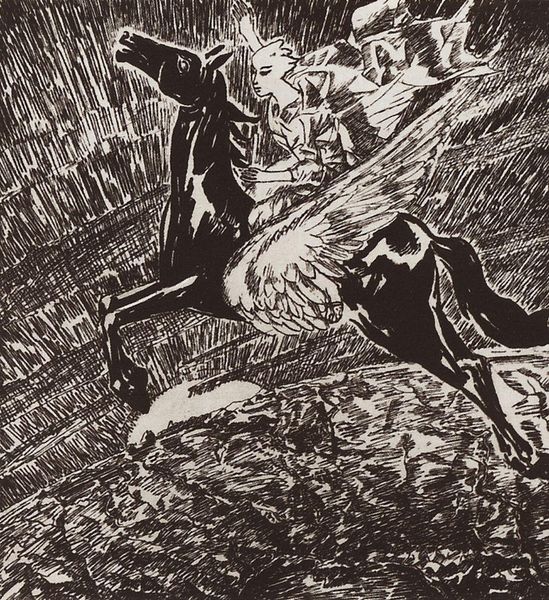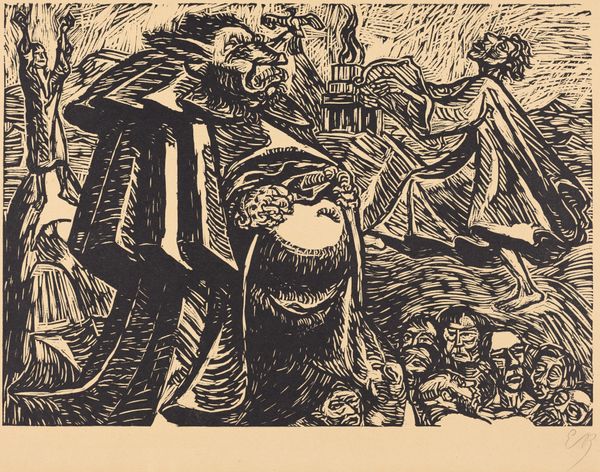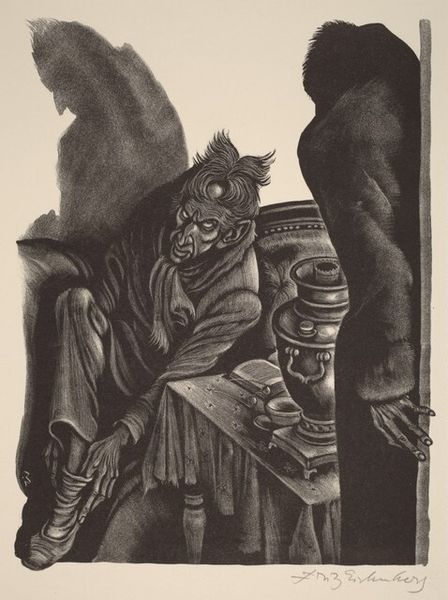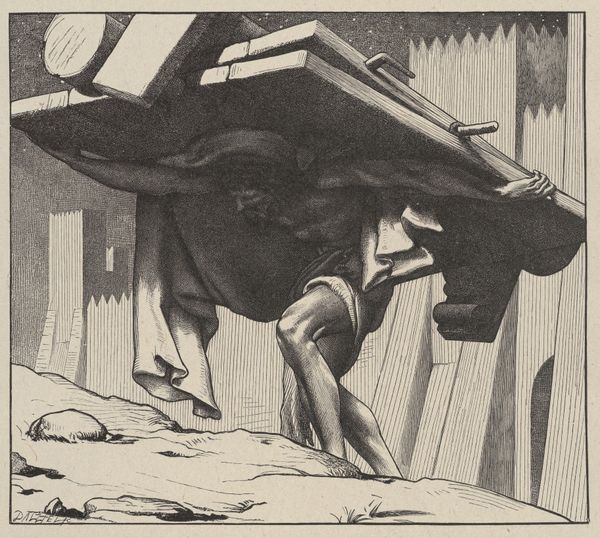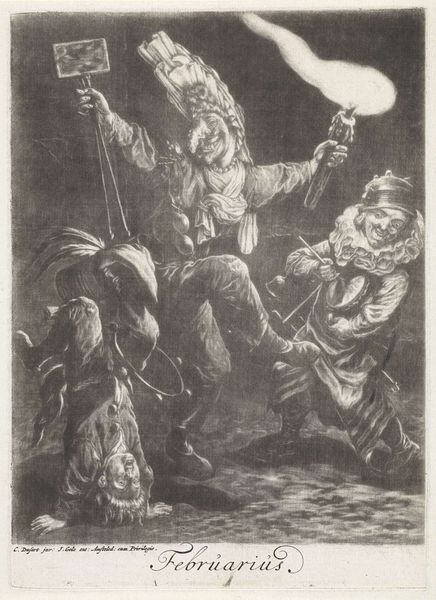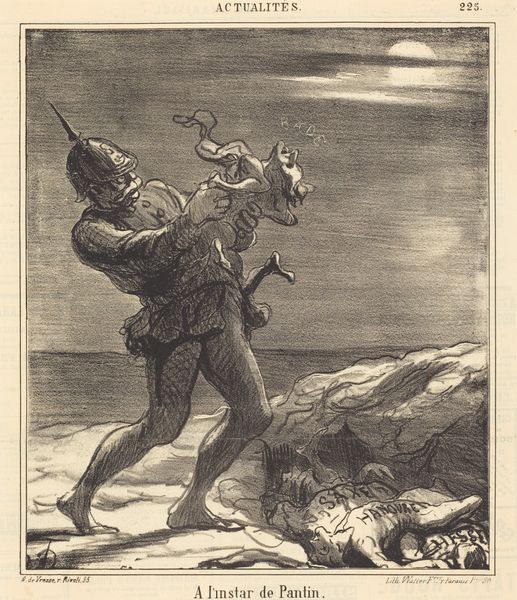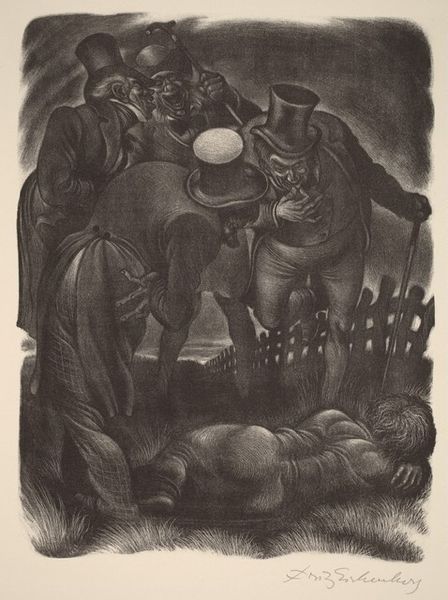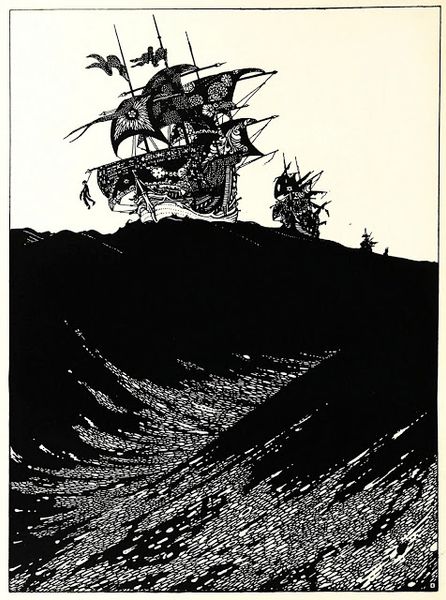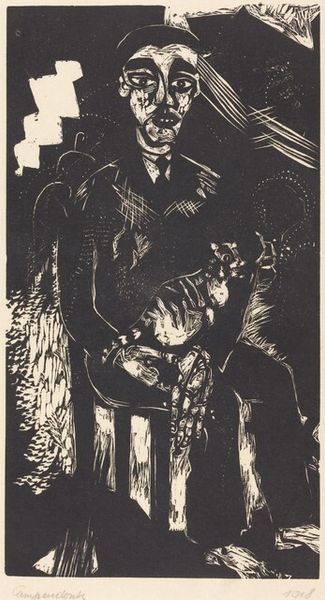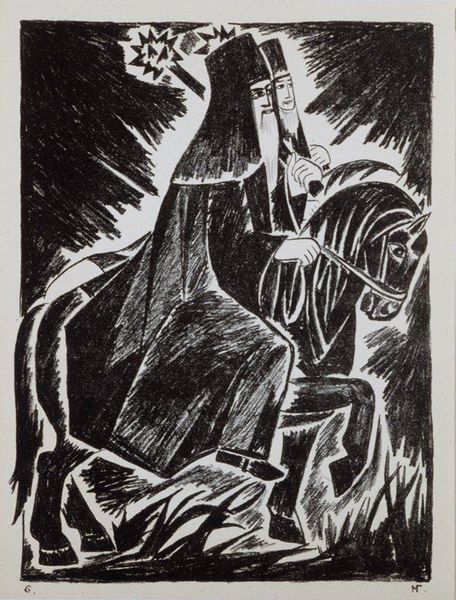
drawing, print, woodcut
#
drawing
#
narrative-art
# print
#
landscape
#
caricature
#
figuration
#
woodcut
#
realism
Dimensions: image: 17.7 × 13.4 cm (6 15/16 × 5 1/4 in.) sheet: 25 × 21 cm (9 13/16 × 8 1/4 in.)
Copyright: National Gallery of Art: CC0 1.0
Editor: This is "Heathcliff in the Snow," a 1930 woodcut print by Clare Leighton. It's intensely dark, this solitary figure trudging through what looks like a harsh winter landscape. What do you see in this piece beyond the immediate drama of the scene? Curator: The figure is undoubtedly Heathcliff, the iconic character from Emily Brontë's *Wuthering Heights.* Leighton’s choice to represent him in this stark medium connects directly to the social and economic conditions of 1930s Britain. Woodcuts, while ancient, experienced a revival partly due to their affordability and reproducibility during a time of economic hardship. Leighton used printmaking to democratize art and make emotionally potent images more accessible. How do you think that accessibility influences our interpretation of the artwork and its narrative today? Editor: So, the medium itself contributes to the story? I see. It makes the art feel more grounded, less precious. More connected to the lives of everyday people maybe, fitting for such a visceral story as "Wuthering Heights". Curator: Precisely. The intense contrasts in the woodcut, the deliberate roughness – these elements reflect not only the brutal landscape but also the tumultuous inner world of Heathcliff himself. Leighton highlights the power of printmaking as a medium for social expression. Does understanding the context in which it was produced influence your view? Editor: Absolutely. Knowing it wasn't just about artistic expression but about reaching a wider audience changes everything. It elevates the work beyond just illustration; it's a social commentary almost. I wouldn’t have picked that up on my own. Curator: It reveals the potent connection between art, audience, and historical forces. Considering how these pieces were made and for whom deepens our relationship with the artwork and makes it far more relevant, wouldn’t you agree? Editor: Yes, I definitely do. Thinking about the artist's intention, who the intended audience was, that adds another whole layer of depth. I’ll keep that in mind moving forward!
Comments
No comments
Be the first to comment and join the conversation on the ultimate creative platform.
